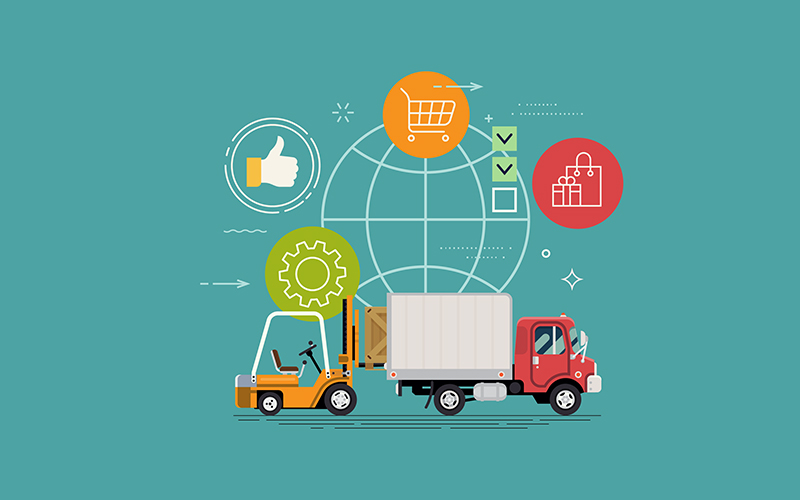Supply Chain
Top supply chain analytics and optimisation trends for 2022
The market is unpredictable, and it is bound to change every year. Businesses must adapt and reinvent their processes to constantly move ahead. Companies are transforming their operations and leveraging new tools and trends to perform better. We have listed the top supply chain analytics trends to give you a head start.
- Strategic changes based on data derived from the COVID-19 era:
- Sustainability:
- Leverage prescriptive analytics:
- Automate supply chain process:
- Adopt blockchain tools to manage data:
The pandemic disrupted many industries and the supply chain was no exception. Managers had to innovate new dynamic strategies to comply with government protocols and lockdowns, as well as manage the demand surge from the reopening of the economy. Even with the development of new solid strategies that could penetrate an uncertain market, about 45% of economists believe we can only expect a recovery by the latter half of 2022.
However, along with disruption, businesses could also see the emergence of new technologies and tools to help them make the right decisions.* Analytics tools and data science helped organisations understand customer behaviour, formulate plans that work in such unprecedented times, and avoid conventional strategies that could result in a loss.
Environmentally responsible production and supply chain operations drive the costs higher, but 90% of millennials today are willing to bear higher prices on the consumer end for sustainably developed products. Environmental, Social, and Governance (ESG) guidelines have already begun to inform investment decisions in quite a few industries. Corporations will drive the sustainability criteria and efforts much farther than before in 2022. With decarbonisation, green business practices, and carbon footprint management no more being mere checkboxes, we can expect tangible efforts from several corporations.
Demand forecasting and predictive analytics are not enough to formulate winning strategies. With prescriptive analytics, businesses can answer specific questions about the best strategies to use for a specific goal. Complex supply chains, with many participants and constant adjustments in response to market fluctuations, derail supply chain plans in about 47% of corporations.
Prescriptive analytics uses recommendation engines, simulation, heuristics, complex event processing, neural networks, graph analysis, and machine learning for supply chain optimisation. Linear programming using historical data helps determine the product flow rate from the manufacturing unit to the suppliers. These analytics detect any pain points or lags and create a hierarchy to ensure the smooth delivery of products. Prescriptive methods for the supply chain accelerate the decision-making process.
Supply chain automation can bring efficiency, streamline processes, and connect data across different channels. Technologies such as artificial intelligence, robotic process automation, digital process automation, and machine learning bring agility to many supply chain operations.
Growing opportunities and demands encourage executives to invest in production and distribution automation technologies. With 60% of the organisations revealing that they expect robotic process automation to influence the supply chain by 2025, we can expect improved efficiency and productivity with automation.
Supply chain data management is still a big concern for many organisations. Many businesses leveraged blockchain technology to unify all processes and data onto a single platform. This way, managers could detect errors and identify issues quickly.
The supply chain market is changing at a fast pace. Latest technologies and tools can help business owners optimise their supply chain cycle and better compete in the market, even in challenging scenarios. By adopting the latest supply chain trends and practices, businesses can stay a step ahead. The capability of businesses to face any disruption with solid strategies reduces the effects of unexpected events.
How Infosys BPM leverages supply chain analytics trends to help businesses?
At Infosys BPM, we offer services that cater to businesses involved in the supply chain. We work alongside organisations as their digital transformation partner to streamline and digitise the supply chain to mitigate risk and minimise cost.
We offer end-to-end solutions with our managed services and technologies to run Supply Chain Planning as a Service by:
- Helping you operate planning as a service and working on continuous improvement
- Defining and deploying an operating model and leveraging necessary digital interventions
- Enabling technology through platform as a service from partner solutions
*For organisations on the digital transformation journey, agility is key in responding to a rapidly changing technology and business landscape. Now more than ever, it is crucial to deliver and exceed organisational expectations with a robust digital mindset backed by innovation. Enabling businesses to sense, learn, respond, and evolve like a living organism, will be imperative for business excellence going forward. A comprehensive yet modular suite of services is doing exactly that. Equipping organisations with intuitive decision-making automatically at scale, actionable insights based on real-time solutions, anytime/anywhere experience, and in-depth data visibility across functions leading to hyper-productivity, Live Enterprise is building connected organisations that are innovating collaboratively for the future.







